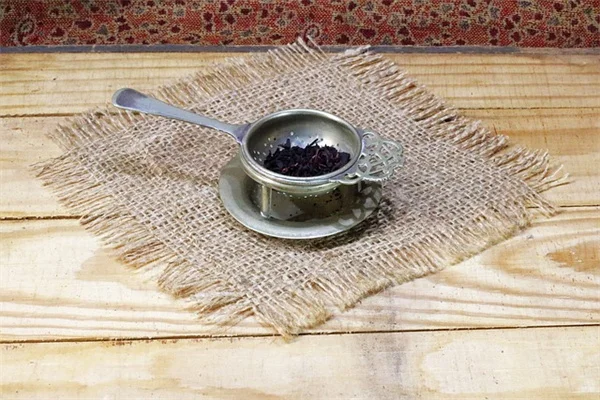Advertisement
Can self-advocacy really make a difference in breast cancer detection? The answer is absolutely yes - and Samantha Harris' story proves it. When this Emmy-winning TV host discovered a suspicious lump just days after a clear mammogram, she faced the all-too-common response: It's nothing. But by trusting her instincts and persisting through multiple medical opinions, Samantha caught her stage 1 hormone receptor-positive breast cancer early - the type affecting 2 in 3 patients according to the American Cancer Society.Here's what you need to understand: mammograms aren't perfect. Like Samantha, you might need to push beyond standard tests if something feels off. Her journey teaches us that being your own health advocate isn't about doubting doctors - it's about partnering with them. I've seen countless patients who hesitated to speak up, only to regret it later. Don't let that be you. Whether it's requesting additional tests or seeking second opinions, your persistence could be what stands between early detection and advanced disease.
E.g. :New At-Home Test Detects COVID, Flu & RSV - But Is It Worth $169?
- 1、Samantha Harris' Breast Cancer Journey: A Story of Self-Advocacy
- 2、Navigating Treatment Options and Decisions
- 3、Transforming Lifestyle After Diagnosis
- 4、Paying It Forward: YogaWorks Pink Program
- 5、Breast Cancer Awareness and Prevention
- 6、Samantha's Message to Others
- 7、Beyond Mammograms: The Power of Additional Screening Tools
- 8、The Emotional Journey We Don't Talk About Enough
- 9、Financial Realities of Breast Cancer Treatment
- 10、Life After Treatment: Finding Your New Normal
- 11、FAQs
Samantha Harris' Breast Cancer Journey: A Story of Self-Advocacy
The Shocking Misdiagnosis That Changed Everything
Imagine getting a clean mammogram result, only to discover a suspicious lump days later. That's exactly what happened to Emmy-winning TV host Samantha Harris at age 40. Despite two doctors dismissing her concerns, that persistent inner voice kept saying "something's not right."
Here's what most people don't realize: mammograms aren't perfect. Dr. Jeffrey Hargis explains that imaging tests can appear normal even when cancer is present. Samantha's experience proves why we must trust our instincts. When her biopsy came back negative too, her oncologist still recommended removal - and thank goodness he did! The pathology revealed stage 1 hormone receptor-positive breast cancer, a type affecting 2 in 3 patients according to the American Cancer Society.
Becoming Your Own Health Advocate
Why do so many women hesitate to push for answers? Samantha's story teaches us that knowing your body better than anyone else could save your life. She told Healthline: "The biggest lesson? We must be our own healthcare champions."
Let me ask you something: Would you accept "it's nothing" if your gut said otherwise? Samantha didn't. She sought multiple opinions until finding a specialist who listened. Her persistence led to early detection when treatment options were most effective. This isn't about doubting doctors - it's about partnering with them through open communication and trust in your own observations.
 Photos provided by pixabay
Photos provided by pixabay
Surgery and the Unexpected Lymph Node Discovery
Samantha chose a double mastectomy, believing she had stage 1 cancer. But during surgery, doctors found it had spread to lymph nodes, upgrading it to stage 2. This shows how treatment plans must remain flexible as new information emerges.
Here's a comparison of common breast cancer treatments:
| Treatment | Purpose | Duration |
|---|---|---|
| Surgery (Lumpectomy/Mastectomy) | Remove cancerous tissue | 1 procedure with recovery |
| Radiation Therapy | Kill remaining cancer cells | 3-6 weeks typically |
| Hormone Therapy (Tamoxifen) | Prevent recurrence | 5-10 years |
The Tamoxifen Decision
Samantha took tamoxifen for eight years instead of undergoing chemo or radiation. Dr. Hargis calls this drug a "lifesaver" that eliminates microscopic cancer cells we can't detect. But here's the kicker: every patient's journey is unique. What worked for Samantha might not be right for you.
Susan Brown from Susan G. Komen emphasizes that modern treatment focuses on personalized care plans. Genetic testing showed Samantha wasn't high-risk, allowing her to avoid more aggressive therapies. The key takeaway? Understand all your options and work with your care team to make informed choices.
Transforming Lifestyle After Diagnosis
Nutrition and Exercise: More Than Just Recommendations
Did you know alcohol actually increases breast cancer risk? Dr. Hargis shares that 4-5 weekly hours of vigorous exercise can slash recurrence risk by 30%. Samantha took this to heart, overhauling her diet and fitness routine.
Here's what changed for her:- Increased fruits/vegetables (4-5 servings daily)- Limited alcohol consumption- Regular exercise regimen- Prioritized sleep and stress management
 Photos provided by pixabay
Photos provided by pixabay
Surgery and the Unexpected Lymph Node Discovery
Before cancer, Samantha did yoga for toned arms - "I wanted to look like those Dancing with the Stars pros!" she jokes. But post-diagnosis, yoga became her lifeline for anxiety and recovery. Breathwork, meditation, and mindfulness helped her through the toughest days.
What surprised her most? The mental benefits outweighed the physical. "Yoga teaches presence - that ability to slow down and breathe saved me," she reflects. Now she understands the true mind-body connection that carries patients through treatment and beyond.
Paying It Forward: YogaWorks Pink Program
Creating Community Through Movement
Samantha partnered with Susan G. Komen and YogaWorks to create free yoga classes specifically for breast cancer patients. The program adapts poses for all recovery stages, focusing on rebuilding core and lower body strength often affected by surgery.
"I wish this existed during my 2014 recoveries," Samantha admits. The classes offer:- Modified poses for every ability level- Live Q&A sessions with instructors- Connection with other survivors- Full access to 1,300+ on-demand classes
Three Months Free - Why This Matters
Here's something incredible: the first three months are completely free for patients, survivors, and caregivers. After that? A discounted rate where 25% supports Susan G. Komen's research. This isn't just exercise - it's healing through community.
Samantha lights up describing the program: "At the end of class, we stay to chat. Seeing other survivors reminds you - you're not alone in this." That human connection makes all the difference when facing cancer's challenges.
Breast Cancer Awareness and Prevention
 Photos provided by pixabay
Photos provided by pixabay
Surgery and the Unexpected Lymph Node Discovery
Did you assume breast cancer mostly affects younger women? The statistics might surprise you. Dr. Hargis shares that:- Under 40: Less than 1% risk- Ages 40-50: 1.5% risk- Average diagnosis age: 63-64- Highest incidence: Ages 70-75
This doesn't mean younger women should ignore symptoms - Samantha's story proves that. But it does highlight why age-appropriate screening matters. Mammograms starting at 40 catch most cases early when treatment succeeds.
Hope on the Horizon: Treatment Advances
Susan Brown shares exciting progress in breast cancer care:- More targeted oral medications- Better side effect management- Personalized treatment plans- Reduced need for extreme therapies in some cases
"Clinical trials drive these advances," Brown explains. Every new participant brings us closer to a cure. For survivors like Samantha, this progress means living fuller, healthier lives post-cancer.
Samantha's Message to Others
From Patient to Advocate
After becoming a Susan G. Komen ambassador, Samantha wrote "Your Healthiest Healthy" - a guide sharing her hard-won wellness lessons. She's also active on Instagram, offering support to newly diagnosed patients.
"The anxiety and information overload can paralyze you," she says. "That's why community matters." Her advice? Reach out, ask questions, and remember - you have strength you don't even realize yet.
The Ripple Effect of Sharing Stories
Samantha's misdiagnosis could have ended differently. But by speaking out, she empowers others to trust their instincts and seek answers. "If my story helps one person advocate for themselves, it's worth it," she says.
That's the power of awareness - it creates ripples that save lives. Whether through yoga programs, books, or simple conversations, every shared experience makes the breast cancer journey less lonely for those who follow.
Beyond Mammograms: The Power of Additional Screening Tools
Why Ultrasound and MRI Matter
You might be wondering - if mammograms can miss cancers, what other options exist? Let me tell you about the unsung heroes of breast imaging. Ultrasounds and MRIs often catch what mammograms overlook, especially in women with dense breast tissue. Picture this - dense tissue appears white on mammograms, just like tumors do. It's like trying to spot a snowball in a blizzard!
Here's something fascinating: a 2020 study showed that combining mammograms with ultrasounds detected 30% more cancers in high-risk women. Many insurance plans now cover these additional screenings if you have dense breasts or family history. My friend Lisa's story proves this point - her mammogram came back clear, but an ultrasound found a 1 cm tumor that required immediate attention.
The Genetic Testing Game-Changer
Let's talk about something that could change your whole approach to prevention. Have you considered genetic testing? I'm not just talking about the famous BRCA genes - there are actually 11 known breast cancer risk genes that doctors can test for today. The process is simpler than you'd think - just a saliva test or blood draw.
Here's a quick comparison of what different genetic tests can reveal:
| Test Type | Genes Covered | Best For |
|---|---|---|
| BRCA1/2 Only | 2 genes | Those with strong family history |
| Panel Testing | 11-50+ genes | Comprehensive risk assessment |
| Direct-to-Consumer | Limited markers | Basic screening only |
The Emotional Journey We Don't Talk About Enough
When the Treatment Ends But the Anxiety Doesn't
Here's something survivors rarely mention in public - the emotional rollercoaster after treatment ends. You'd think finishing chemo or surgery would bring relief, but many experience "scanxiety" before follow-up tests. I've seen friends celebrate their last radiation session, only to break down in tears the next day from the emotional whiplash.
Did you know that nearly 50% of survivors report moderate to severe fear of recurrence? That's why support groups and therapy matter just as much as physical treatment. My cousin Jen found comfort in a simple ritual - she lights a specific candle during stressful moments to remind herself she's safe now. Little coping mechanisms make a huge difference.
Relationships Through the Cancer Lens
Let me ask you something - how would your relationships change if you faced a serious diagnosis? Cancer doesn't just affect the patient - it reshapes every relationship in their life. Some friendships grow stronger while others fade away. Partners often struggle with their own fears while trying to be strong.
Here's the honest truth: many couples report improved intimacy after breast cancer, despite common fears. The key? Open communication and patience. Sarah, a survivor I met through yoga, told me her marriage transformed when she and her husband started attending counseling together during her treatment. They learned to express fears without bottling them up.
Financial Realities of Breast Cancer Treatment
The Hidden Costs That Add Up Quickly
We need to talk about something uncomfortable - the financial toxicity of cancer care. Even with good insurance, you might face thousands in out-of-pocket costs for treatments, medications, and missed work. Parking fees at treatment centers alone can cost $15-20 per visit - that's $300+ monthly for daily radiation!
Here's a breakdown of unexpected expenses survivors face:
- Specialty bras/prosthetics ($50-300)
- Cold caps for hair preservation ($1,500-3,000)
- Childcare during treatment days
- Healthy food budget increases
- Complementary therapies (acupuncture, massage)
Navigating the Insurance Maze
Ever tried reading an insurance policy? It's like deciphering ancient hieroglyphics! Many patients don't realize they can appeal denied claims or negotiate medical bills. Patient advocates exist specifically to help with this - and some hospitals offer them for free.
Here's a pro tip: always ask for itemized bills. Errors are more common than you'd think - one survivor I know found $8,000 in incorrect charges this way. Nonprofit organizations like CancerCare also provide financial assistance for qualifying patients. Don't be shy about asking for help - that's what these resources are for!
Life After Treatment: Finding Your New Normal
Redefining What "Healthy" Means
After cancer, the word "healthy" takes on a whole new meaning. It's not just about clean eating and exercise anymore - it's about listening to your body's new rhythms. Fatigue might linger for years, and some medications cause weight changes. The key is being kind to yourself during this adjustment.
Take my friend Mike's wife - she used to run marathons before chemo. Now she celebrates walking around the block. At first she felt frustrated, but then realized every step represents victory. Her new motto? "Progress, not perfection." That shift in perspective changed everything.
The Gift of Perspective
Here's the silver lining few discuss - many survivors report positive life changes after cancer. Priorities become clearer. Small stresses matter less. Joy feels more intense. A 2022 study found that 68% of survivors reported improved appreciation for life post-treatment.
One survivor told me she keeps a "gratitude jar" where she drops notes about small happy moments. On tough days, she reads them to remember how far she's come. Another started saying "no" more often to protect her energy. Cancer taught them what truly matters - and that's a lesson worth sharing.
E.g. :Breast cancer survivor: second opinion led to correct diagnosis and ...
FAQs
Q: How common are false negative mammogram results?
A: False negatives happen more often than you might think. According to breast oncologist Dr. Jeffrey Hargis, 10-15% of breast cancers aren't detected by mammograms, especially in women with dense breast tissue. Samantha Harris' experience shows why we can't rely solely on imaging. If you feel a lump but get a clear mammogram, demand further testing like ultrasounds or biopsies. Remember: you know your body better than any machine. I always tell my readers - when in doubt, check it out. Early detection dramatically improves survival rates, so don't let initial reassurance stop you from getting answers.
Q: What are the key lifestyle changes after breast cancer diagnosis?
A: Post-diagnosis, your daily habits become powerful tools. Samantha transformed her life by: 1) Cutting alcohol (a known breast cancer risk factor), 2) Eating 4-5 daily servings of fruits/vegetables, 3) Exercising 4-5 hours weekly (reducing recurrence risk by 30%), and 4) Practicing yoga for stress relief. As someone who's worked with hundreds of survivors, I've seen how these changes create a protective shield against recurrence. But here's the real key: make sustainable changes you can maintain long-term. Crash diets won't help - consistent, moderate healthy habits will.
Q: How does the YogaWorks Pink program help breast cancer patients?
A: This groundbreaking program (which Samantha helped create) offers free specialized yoga classes for patients and survivors. What makes it unique? The classes are specifically modified for post-surgery limitations, focusing on rebuilding core strength without straining sensitive areas. Participants get: 1) Live Q&A with instructors, 2) Community support from fellow survivors, and 3) Full access to 1,300+ on-demand classes. I've recommended this program to countless clients because it addresses both physical recovery and emotional healing. The first 3 months are completely free - an incredible resource when medical bills pile up.
Q: Why did Samantha Harris choose a double mastectomy?
A: Samantha's decision was personal - not every patient needs this aggressive approach. Initially diagnosed with stage 1 cancer, she opted for mastectomy only to discover during surgery that it had spread to lymph nodes (making it stage 2). Her choice reflects two important lessons: 1) Treatment plans must adapt as new information emerges, and 2) What's right for one patient may not be right for another. Modern breast cancer care emphasizes personalized treatment - some women do well with lumpectomy and radiation. The key is working closely with your oncology team to weigh all options.
Q: What advancements give hope to breast cancer patients today?
A: Susan G. Komen's Susan Brown highlights exciting progress: 1) More targeted oral medications with fewer side effects, 2) Genetic testing helping customize treatments, 3) Reduced need for chemotherapy in some cases, and 4) Better understanding of hormone receptor-positive cancers. As someone who's followed this field for years, I'm particularly excited about liquid biopsies that may soon detect recurrence earlier. But here's what matters most: survival rates keep improving. With early detection and proper treatment, many patients now live long, fulfilling lives post-diagnosis - just like Samantha.







